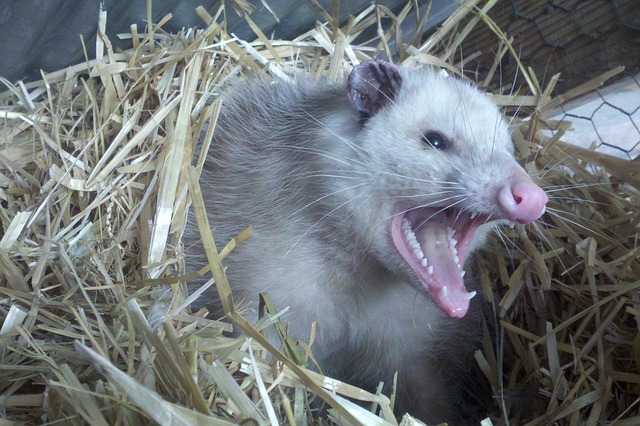Opossum Infestation
Portland OR, Vancouver WA
Crawl spaces are ideal environments for an opossum infestation to occur. It’s a cool, damp atmosphere, and coupled with the lack of sunlight, it’s a preferential place for opossums to nest. An opossum taking residency in a home can lead to possible bacteria accumulation, attacks on pets, and spread of disease. An opossum infestation is something to take action against when detected, and can be prevented through routine crawl space clean outs.

Life Cycle & Biology of an Opossum
Opossums are whitish or grayish, and about the size of a house cat. Their faces are long and pointed, with rounded and hairless ears, a rat-like tail, and wide spread fingers. Opossums gravitate to garbage cans and pet food dishes. When threatened, an opossum may bare its teeth, growl, bite, and exude an odorous greenish fluid from their anal glands.
Their mating season is typically from January to July, and raise 2 or 3 litters in a year, with an average of 7 born at a time. Litters are born 13 days after mating, and the offspring will remain with their mother until about 13 to 15 weeks. The young will then go on to roam until they find a suitable living space, and live alone. Opossums are most active at night and have an adverse reaction to daylight, which renders them stupid and inhibited.
Signs of Infestations
Opossums are nocturnal creatures. They would love remain in the confines of the damp, dark environment of your crawl space; An estimate is a great way to identify an opossum infestation. Some subtle signs are the sounds of bumping or scurrying under floors, and a musty odor in the home or crawl space.
Dangers of Infestations
Opossum infestations are potentially dangerous to a home’s inhabitants. They gravitate to garbage, gardens, bird feeders, and pet food. Opossums are capable of shredding duct work, chewing on wiring, which creates a fire hazard, and tearing insulation that can be found in the pipes of a crawl space. They can also chew water lines, making your home susceptible to flooding.
Opossums also carry diseases transmittable to humans, such as tuberculosis and toxoplasmosis. As studies have shown that crawl spaces share 40-60% of its air with a home, having an airborne contagion would be putting the whole family at risk. Opossums are also host to fleas and ticks, and are capable of fighting with dogs and cats. That, coupled with their capacity for inflicting serious injury with their teeth, makes them dangerous to the pets as well.
What We Can Do For You
Opossums are capable of biting in self-defense. Having the professional experts of Bloom check your crawl space would be ideal. It would take out the risk of personal injury while getting an honest assessment of any damages that have occurred. Some solutions we offer are:
- Entry Exclusion, which is the process of closing off all entry points of a crawl space. Cutting off anyway an opossum could find in is a great preventative step.
- Vapor Barrier Replacement, which would remove any feces, chewing, nesting, and storing of food that would destroy a vapor barrier.
- Insulation Replacement, which would replace any insulation an opossum might have used for nesting or have become contaminated with their feces, chewing, and stored food.
Bloom Editor Danielle Schneider

Bloom Reporter Leah Iannacone

